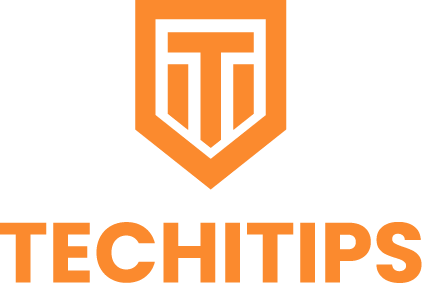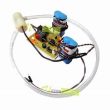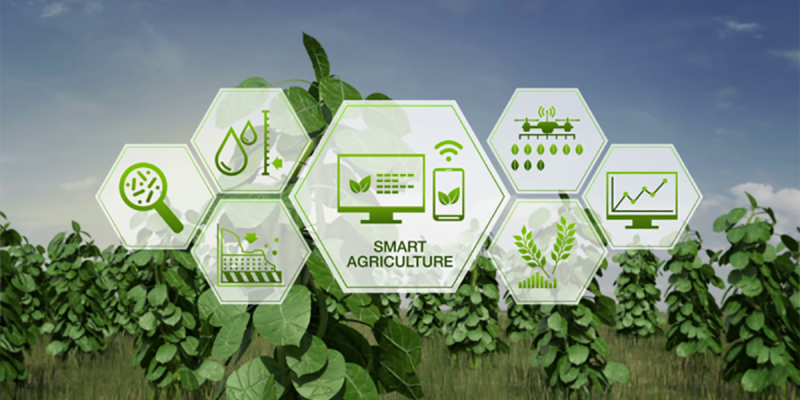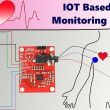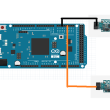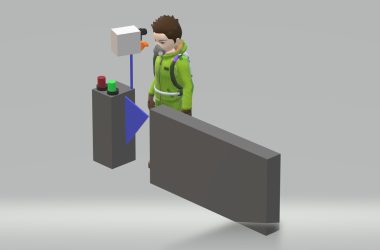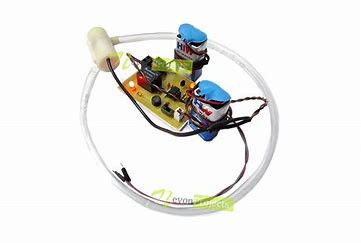Introduction
Agriculture has always been the backbone of human civilization. It’s the science and art of cultivating plants and livestock, feeding populations, and fueling economies. However, traditional farming methods have their limitations, especially in the face of climate change, resource constraints, and the growing need for efficient farming techniques. This is where technology steps in, specifically the Internet of Things (IoT).
The IoT-based smart agriculture monitoring system promises to revolutionize farming practices by automating various aspects of agriculture. Imagine a farm where sensors monitor soil moisture, temperature, and water levels, allowing farmers to make data-driven decisions in real-time. That’s the future we’re talking about.
What is IoT in Agriculture?
IoT, or the Internet of Things, refers to a network of connected devices that communicate and share data over the internet. When applied to agriculture, IoT can help monitor and manage environmental factors such as temperature, humidity, and soil conditions.
By leveraging IoT, farmers can get precise, real-time insights into their fields, ensuring better decision-making, reduced wastage, and optimized crop growth. It transforms agriculture from being labor-intensive to technology-driven.
Components of an IoT-Based Smart Agriculture System
An IoT-based agriculture system consists of various hardware and software components that work together to automate and streamline farming processes. Some of the most crucial components include:
- Sensors (for temperature, humidity, water, and soil moisture)
- Arduino (the microcontroller that processes sensor data)
- GSM and WiFi modules (for communication and remote monitoring)
- Water pump and fan (for irrigation and temperature control)
These devices collect and transmit data, enabling farmers to monitor their fields remotely and even automate tasks like irrigation and climate control.
How the IoT-Based Agriculture Monitoring System Works
At the heart of this system is the idea of automation. It utilizes wireless sensor networks that gather data from different areas of the farm. These sensors communicate wirelessly and send the collected data to a centralized server via IoT protocols.
The farmer, in turn, can access this data on a mobile app or web dashboard, where real-time information about water levels, soil moisture, and temperature is displayed. If the system detects that the water level is low, it automatically triggers the water pump. Similarly, the fan will turn on if the temperature exceeds a set threshold.
Main Features of the Proposed System
This IoT-based agriculture monitoring system has several advanced features that make farming more efficient:
- Automatic water level monitoring: The system checks water levels and starts the pump if needed.
- Soil moisture and humidity monitoring: Sensors measure soil moisture and air humidity to ensure optimal irrigation.
- Temperature control: If the temperature goes beyond a set point, the fan starts to cool the area.
- Remote access and SMS alerts: Farmers get SMS alerts about critical parameters and can monitor everything remotely.
Detailed Description of System Components
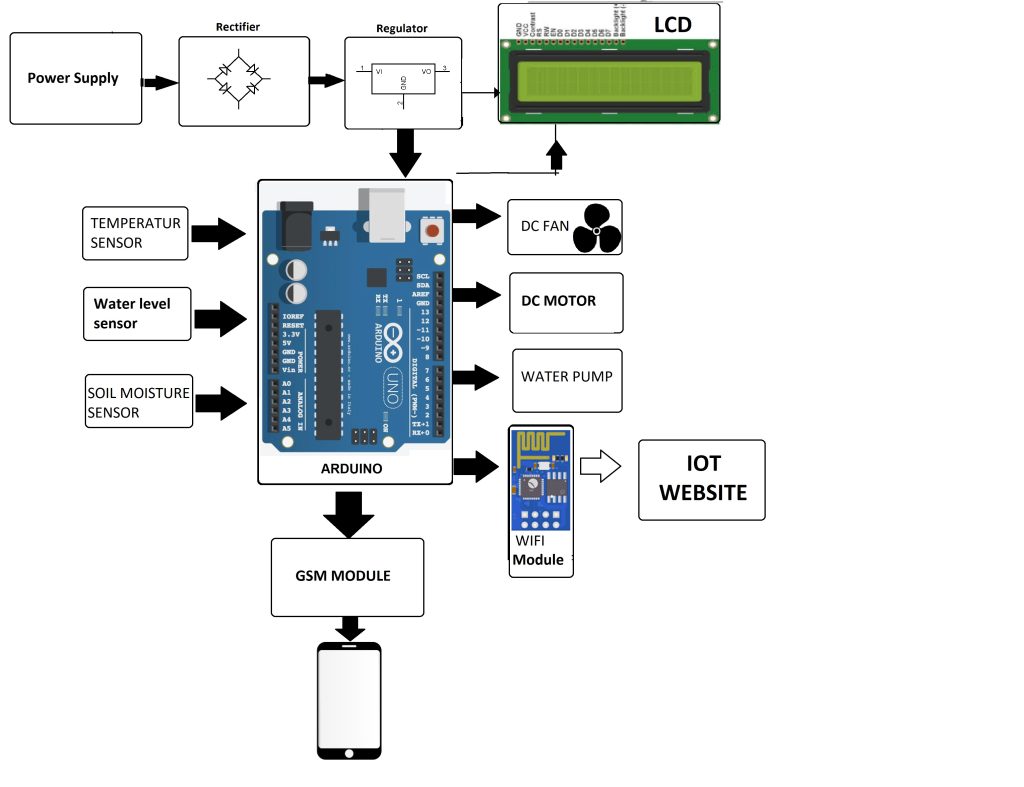
- Arduino: The brain of the system, responsible for processing sensor data and controlling other hardware.
- GSM Modem: Sends SMS alerts and allows remote communication.
- WiFi Module: Provides internet connectivity for IoT communication.
- Temperature Sensor: Monitors heat levels in the field.
- Humidity Sensor: Measures the moisture content in the air.
- Water Level Sensor: Keeps track of water availability for irrigation.
- DC Motor and Water Pump: Used for controlling water flow in irrigation.
- Mini Exhaust Fan: Turns on when temperature levels rise above the preset threshold.
Step-by-Step Functionality of the System
- Water level monitoring: The system constantly checks water levels. If water falls below a certain level, it starts the water pump.
- Moisture and humidity sensing: These sensors gather data on soil moisture and air humidity, ensuring plants receive adequate water.
- Temperature control: When temperatures exceed the set point, the exhaust fan kicks in to cool down the area.
- LCD and IoT app integration: All this data is displayed on an LCD screen and can also be viewed via a smartphone app or web interface.
Software and Wireless Protocols Used
The system uses IoT cloud platforms for real-time monitoring. The GSM module sends SMS alerts to the farmer, and wireless sensor networks transmit data to the central controller.
Block Diagram Explanation
The block diagram illustrates how the components interact. Sensors are connected to the Arduino, which processes the data. The GSM modem and WiFi module handle communication, while the LCD screen and app provide a user interface.
Automation in Agriculture
Automation reduces the need for manual intervention in farming. For instance, rather than manually turning on irrigation systems, this IoT setup automates it. In the future, we could even see robots taking over more farming tasks, guided by IoT data.
Benefits of the IoT-Based Agriculture Monitoring System
The system offers several benefits:
- Increased productivity: By providing real-time data, farmers can make better decisions.
- Resource efficiency: Water and electricity are used more judiciously, minimizing waste.
- Better crop management: Data-driven insights help improve crop yield.
- Cost-effective: Automating processes like irrigation cuts down on labor and operational costs.
Challenges in Implementing IoT in Agriculture
However, there are challenges:
- Connectivity: Rural areas often lack reliable internet access.
- Costs: The initial setup can be expensive.
- Technical expertise: Farmers need training to use these systems effectively.
Case Studies: Successful Implementation of IoT in Agriculture
Farms worldwide are already seeing success with IoT. In India, for instance, farmers are using IoT systems to monitor water levels and improve crop yield, while in the Netherlands, IoT is being used for precision farming to maximize efficiency.
Future Scope of IoT in Agriculture
The future of IoT in agriculture looks promising. With advances in AI and machine learning, IoT systems could soon predict weather patterns, pest outbreaks, and crop yields, making farming
Refrences
Books and Academic References:
- “Internet of Things for Smart Agriculture: Technologies, Practices and Future Directions” – This book provides a comprehensive overview of IoT technologies specifically tailored for agriculture, including sensor networks and automated monitoring systems.
- “Precision Agriculture Technology for Crop Farming” by Qin Zhang – This book covers various technologies that enhance modern farming, including IoT-based systems.
- “Wireless Sensor Networks: Technology, Protocols, and Applications” by Kazem Sohraby, Daniel Minoli, and Taieb Znati – Offers insight into the use of wireless sensor networks, which are central to smart agriculture systems.
Research Papers:
- “IoT-Based Smart Agriculture: Towards Making the Fields Talk” – This paper explains the importance of IoT in modern agriculture and provides insights into wireless sensor networks and real-time data monitoring.
- “Smart Agriculture Monitoring System Using IoT Technology” – A research paper that details how IoT technologies are being applied to monitor environmental conditions and improve crop yields in agriculture.
- “IoT for Sustainable Smart Farming: A Review” – This paper outlines various IoT-based agricultural systems, their benefits, and challenges, providing useful case studies.
Online Platforms and Tutorials:
- Arduino Official Website (https://www.arduino.cc/): For tutorials and guidance on setting up an IoT system using Arduino, the core microcontroller used in this project.
- Raspberry Pi Foundation (https://www.raspberrypi.org/): Offers resources and tutorials on setting up IoT projects using Raspberry Pi, which can be an alternative to Arduino in smart agriculture.
- Instructables (https://www.instructables.com/): A website with DIY projects and guides for building IoT systems, including those specifically aimed at agriculture and environmental monitoring.
IoT and Agriculture Platforms:
- ThingsBoard (https://thingsboard.io/): An open-source IoT platform that allows you to manage and visualize data from sensors in real-time. It’s ideal for building a smart agriculture monitoring system.
- Cayenne myDevices (https://mydevices.com/): Another IoT platform that simplifies the connection and management of devices in a smart agriculture setup.
Hardware and Sensor Documentation:
- DHT11/DHT22 Temperature and Humidity Sensor Documentation – Available on the Arduino website, it provides detailed instructions on integrating temperature and humidity sensors into an IoT-based system.
- YL-69 Soil Moisture Sensor Documentation – Tutorials on how to integrate moisture sensors with microcontrollers like Arduino for real-time monitoring.
Research Databases:
Google Scholar (https://scholar.google.com/): Another platform where you can find academic papers and studies on IoT and its applications in smart agriculture.
IEEE Xplore (https://ieeexplore.ieee.org/): Contains thousands of research papers on IoT and agriculture-related technologies.
